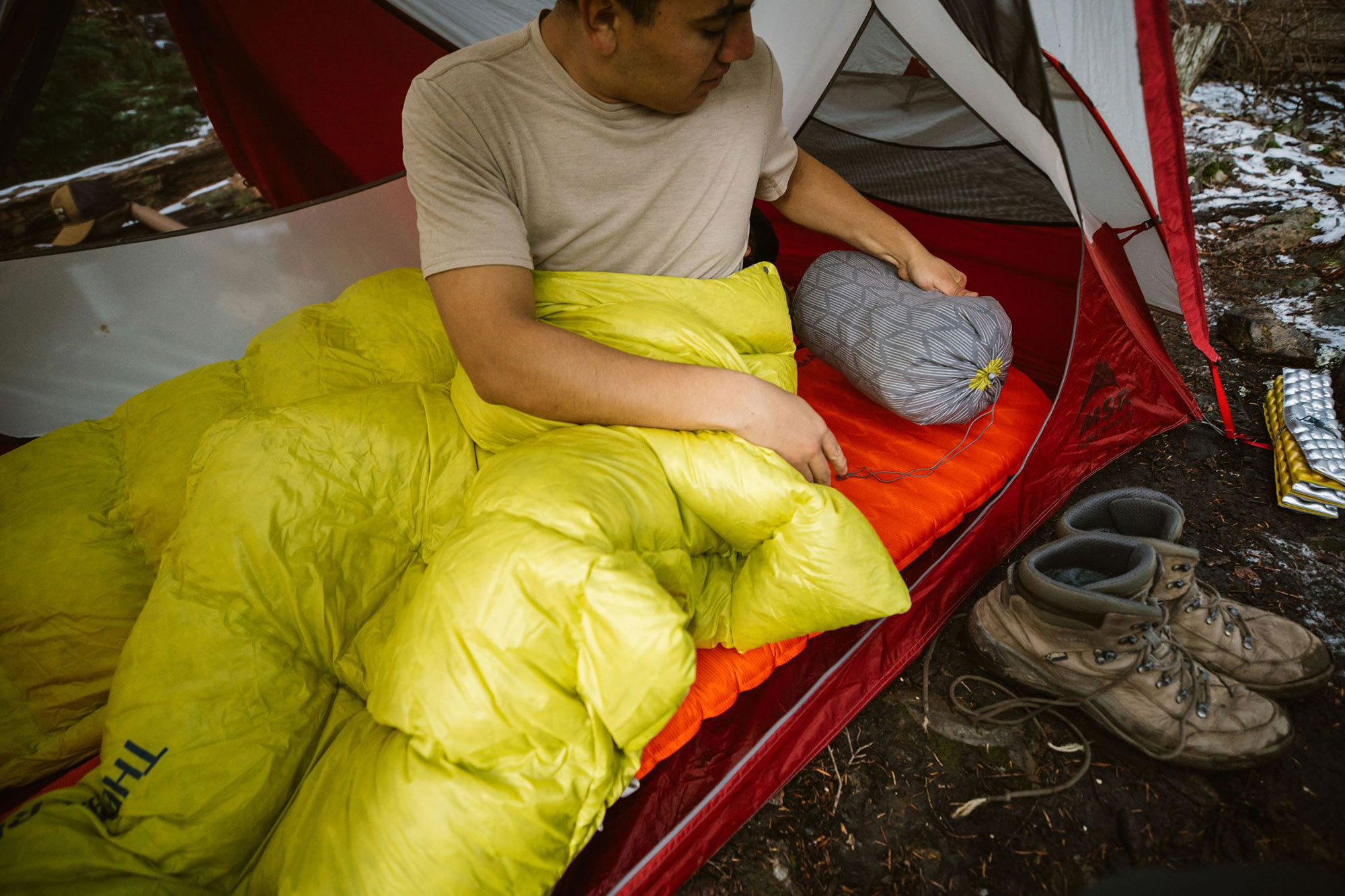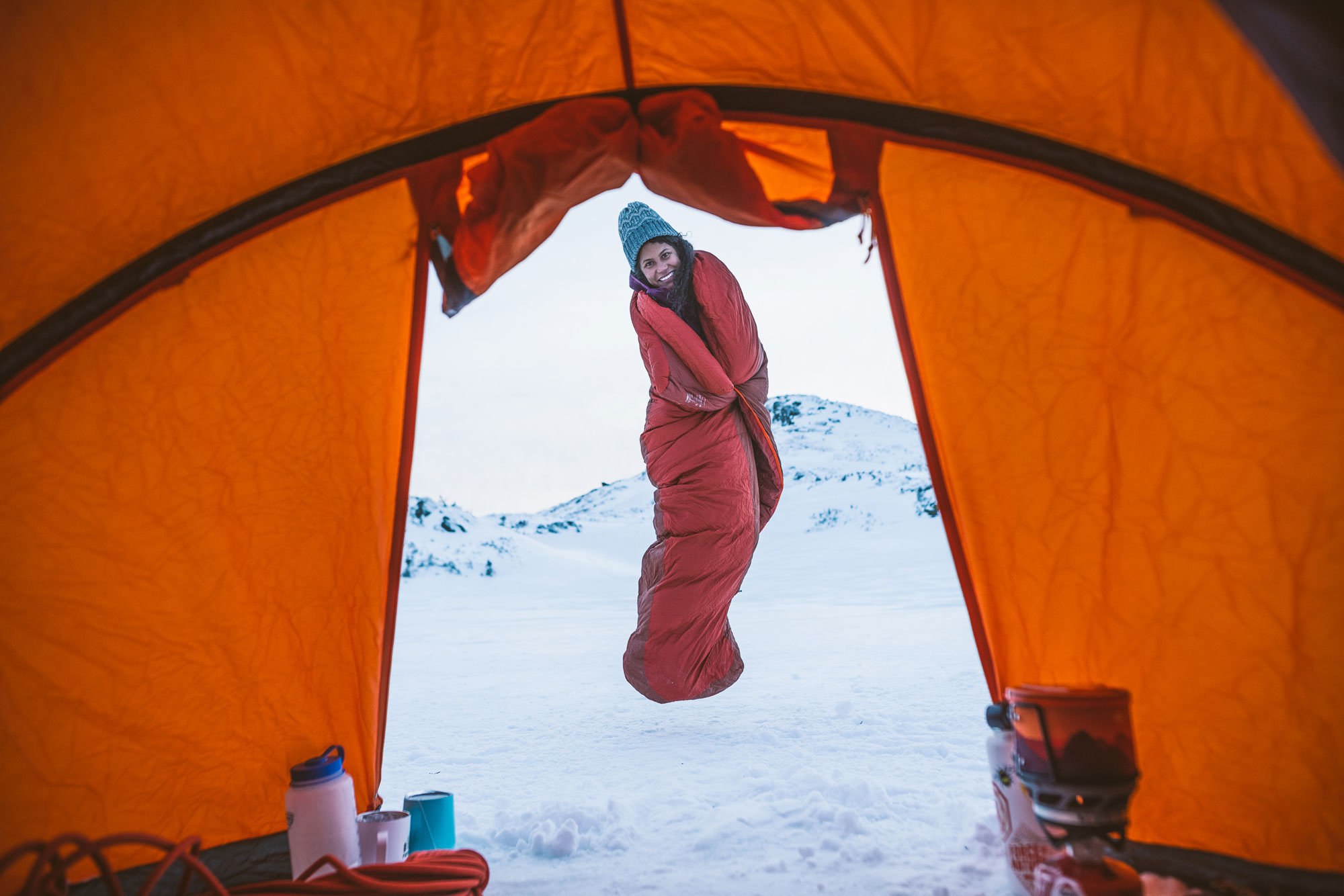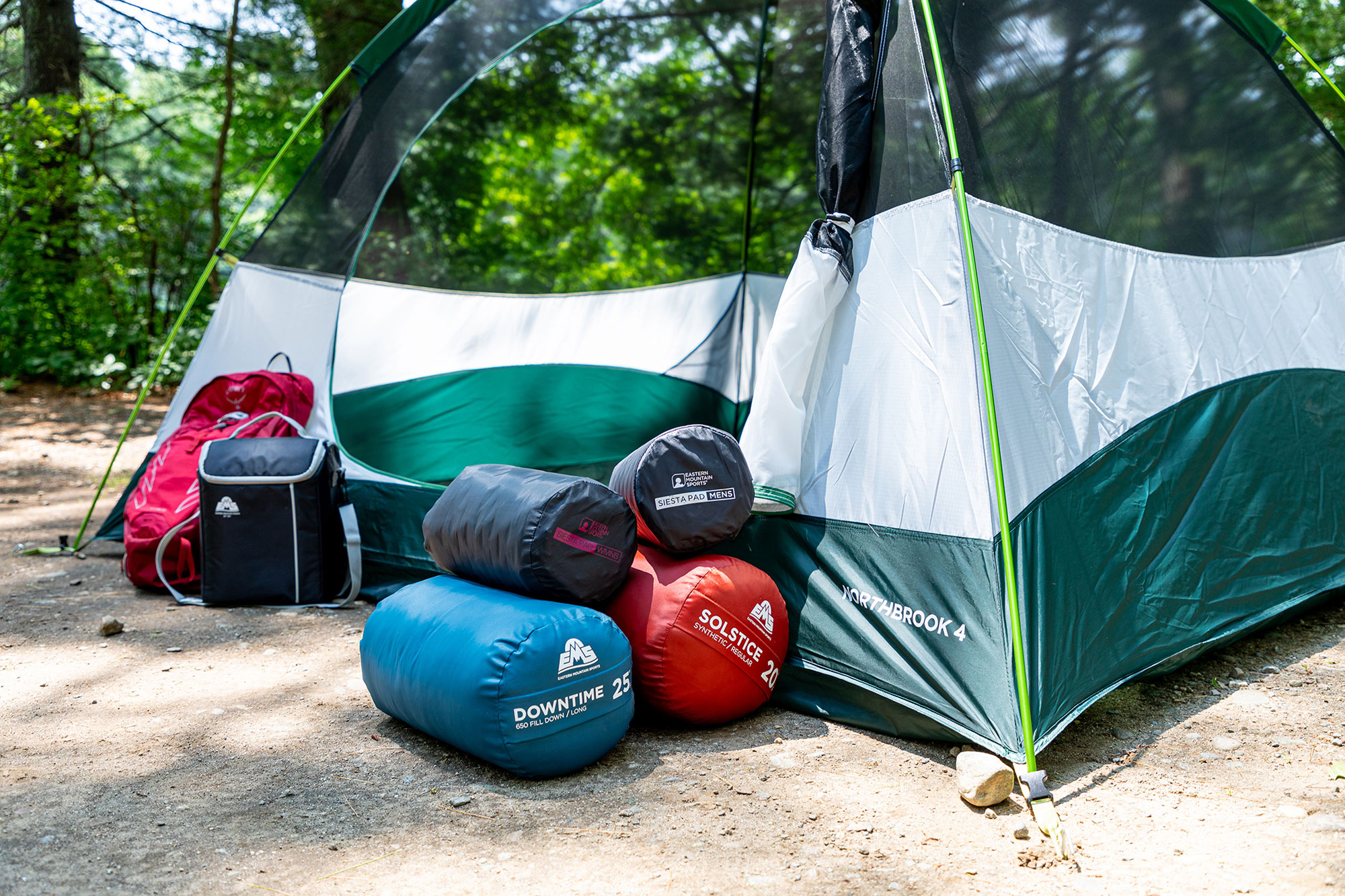If you’ve ever seen a thru-hiker’s sleep setup, chances are you’ve seen a quilt. And thru-hikers, who crank out more miles than anyone, use them for a reason. It’s a piece of equipment that functions like a sleeping bag but instead of covering your whole body, it’s designed to function more like a blanket. This piece of gear allows users to customize their sleeping experience while substantially cutting down on the weight that they carry. Sleeping bags, on the other hand, are a time-tested piece of gear that have accompanied adventures of every kind. So which is better?

How Quilts Work
Sleeping bags and quilts work like any insulator: They fluff up, or loft, and it’s that lofted insulation that traps heat your body puts out and keeps you warm. But when you’re using your sleeping bag, you’re always sleeping on top of half of it. The part underneath you is being crushed between you and your sleeping pad, and isn’t lofting up very much, so it’s not doing much to keep you warm. Instead, it’s your sleeping pad that’s “lofting up” (in that case, we call it inflating) and insulating you from the cold ground. So if the insulation on the bottom of your sleeping bag isn’t doing much to keep you warm, why bother with it at all? That’s where a quilt comes in.
Quilts remove the mostly useless and redundant insulation in the bottom of your sleeping bag, saving you a lot of weight and space in your pack, with the hope that they’ll keep you just as warm as a sleeping bag would. Quits are often more than just blankets, though. They often feature foot boxes like sleeping bags to keep your toes from sliding out into the cold at night. They can have cinch cords that hold the quilt onto your sleeping bag, and they can even have draft collars.
Obviously, your sleeping pad is a critical part of the equation if you choose to use a quilt. In the same way that a sleeping bag and quilt come with a temperature rating, sleeping pads come with an insulation rating known as an R-value. This figure tells you how well the sleeping pad will insulate you from the ground. The higher the R-Value, the warmer you can expect it to be. So don’t skimp on a sleeping pad, especially if you’re using a quilt.

Pros and Cons of Quilts
Quilts like the EMS Clarity Ultralight are generally lighter than sleeping bags because they use far less insulation and materials than sleeping bags. Since it takes less fabric and less down to create a quilt, a quilt could be up to half the size of a sleeping bag. Down quilts will also pack down to an impressively small size, commonly reducing themselves to the size of a softball.
Because of the quilt’s structure, it’s a versatile item. Depending on the specific model that you purchase, you may be able to expand it to be a simple down blanket. This can be nice for those who appreciate variety.
They’re still a relatively new piece of gear, which means that quilts can be more expensive than sleeping bags. But it is possible to find an affordable quilt that’ll cover all of your sleeping needs.

Pros and Cons of Sleeping Bags
Sleeping bags have strengths and weaknesses just like quilts. Because of the structure of a sleeping bag, you won’t have to fiddle around or make adjustments with it in order to stay insulated. Instead, you can just crawl into a sleeping bag when you’re ready for bed, without worrying about tossing and turning out of your bag or having a foot escape into the cold. But they also have additional fabric, which means that they tend to be heavier than quilts. And like we said, that additional insulation might not be doing much for you.

Why You Might Want to Use One Over the Other
Sleeping bags tend to be easier to manage in extremely cold conditions because there’s no opportunity for warm air to escape from your body. They also tend to be easier to access, and they cover a wider variety of temperature grades. It’s possible to find a sleeping bag with a rating of -20 degrees, but you probably won’t be able to find a quilt that’s suitable for real winter camping. But quilts like the EMS Anomaly Ultralight can help you to substantially cut down on your pack weight if you’re dedicated to ultralight backpacking in the summertime. Quilts are also more versatile and come in a wider variety of shapes and sizes. For a lot of people they’re more comfortable, allowing you to spread out like you’re in your bed at home, and they make it easiest to adjust the insulation you need to match the temperature: On a hot night, it’s easy to stick a leg out or peel the quilt down where you need it.
Consider these circumstances to decide whether a sleeping bag or a quilt is the best fit for you:
| Do you toss and turn in your sleep? | A quilt just might not be able to contain you—A sleeping bag might give you a better chance of staying covered up. |
| Do you get cramped or claustrophobic in mummy sleeping bags? | A quilt might be exactly what you need, giving you room to spread out, sleep different ways, and really get comfortable. |
| Are you a weight-conscious three-season backpacker? | You can easily find quilts capable of keeping you warm into the 20s, so for spring, summer, and fall camping, you might be able to save some weight in your pack without really losing out on anything by using a quilt. |
| Are you winter camping? | In real cold, you’re going to feel every little burst of cold air from the edges of a quilt and they’ll struggle to keep you buttoned-up and warm like a sleeping bag will. |
| Is it really warm? | Sleeping bags can feel stuffy and hot, even if they’re not rated really warm. A quilt allows you much earlier ventilation and better customization to find the ideal temperature. |
Do you have a preference between quilts and sleeping bags? Let us know in the comments!
Mary Beth Skylis
Mary Beth began her journey in the outdoors while thru-hiking the Appalachian Trail in 2015. She soon went on to backpack the Colorado Trail, and part of Nepal's Annapurna Circuit. Today, she resides in North Carolina where she can commonly be found rock climbing, surfing, or backpacking. Some of her recent work can be found in Outside and Backpacker Magazines.




